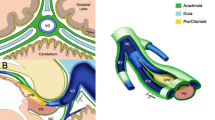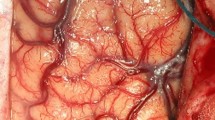Abstract
The authors retrospectively reviewed 48 patients treated at Seoul National University Hospital (SNUH) between 1986 and 1995. There were 35 children and 13 adults, accounting for 10.1% of 345 pediatric and 0.68% of 1914 adult brain tumors in SNUH during the same period. The 48 cases consisted of 33 cases of germ cell tumor (69%, GCT); 6 of pineoblastoma (PB, 12.5%); 3 of pineocytoma (PC, 6.3%); 3 of anaplastic astrocytoma (6.3%); 1 of astrocytoma; 1 of glioblastoma; and 1 of ependymoma. The median age was 13 years (range 1–59) and the male-to-female ratio was 3.36:1. The most frequent presenting symptom was due to increased intracranial pressure (90%), followed by Parinaud syndrome or diplopia (50%). Patients with a benign tumor, such as teratoma (TE), astrocytoma, or ependymoma, underwent surgery by the occipital transtentorial approach (OTT) for attempted radical resection without adjuvant therapy, while patients with immature teratoma (imTE), PC, and anaplastic astrocytoma underwent regional radiotherapy (RT) after debulking via OTT. Seven patients with nongerminomatous malignant GCT (NG-MGCT) and 3 with germinoma (GE) underwent craniospinal radiation only, 6 with GE, a NG-MGCT, and 2 with GE+TE received craniospinal radiotherapy (CSRT) after debulking via OTT. Three patients with GE, 4 with NG-MGCT, and 3 with PB underwent radiochemotherapy after debulking via OTT. Forty-four patients were followed up after treatment. The median follow-up period was 36 months. All patients with GE were alive after RT at 36 months (median) of follow-up (range 7–70 months). All with GE+TE and TE were alive. Three patients with PC or astrocytoma were also alive with stable or no evidence of disease. In 1 of the 3 cases of imTE there was a recurrence. However, 4 patients with NG-MGCT died, all of whom had undergone CSRT only; 2 PB patients were alive (12, 19 months), 1 in a moribund status (36 months), and 2 were dead (6, 60 months). The overall mean survival time with pineal tumors was 66 months and the 3-year survival rate was 84% with minimal posttreatment complications. It is concluded that pineal region tumors have male and childhood predominances, and the most common tumor is GCT. The majority of pineal region tumors are malignant. Pineal region tumors can be approached safely and effectively and the surgical complications are mostly transient. Their prognosis is dependent on the pathologies and treatment modalities.
Similar content being viewed by others
Author information
Authors and Affiliations
Rights and permissions
About this article
Cite this article
Cho, BK., Wang, KC., Nam, DH. et al. Pineal tumors: experience with 48 cases over 10 years. Child's Nerv Syst 14, 53–58 (1998). https://doi.org/10.1007/s003810050175
Issue Date:
DOI: https://doi.org/10.1007/s003810050175




